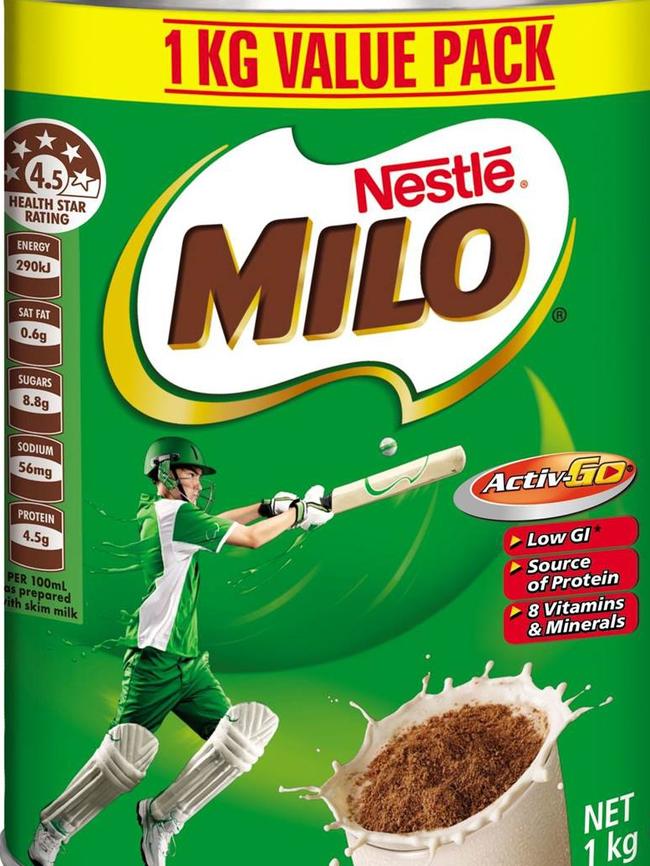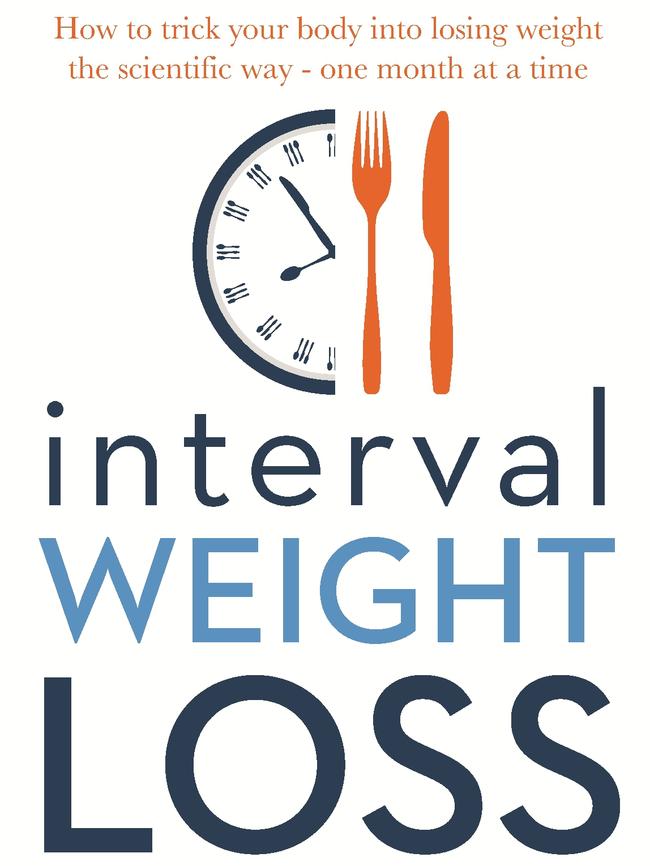The biggest problem with grocery shopping
THERE is one major problem with grocery shopping and it all comes down to Australia’s health star ratings, says a Sydney doctor. In light of the Milo fiasco, Dr Nick Fuller lifts the lid on the major issue surrounding how food is rated on our shelves.
Lifestyle
Don't miss out on the headlines from Lifestyle. Followed categories will be added to My News.
THE Health Star Rating has been on our supermarket shelves since 2014 — a voluntary system whereby food manufacturers can add it to their products if so inclined.
The numerous problems with the system means it’s currently under review by the federal government, but is back in the spotlight with the fiasco surrounding Milo.
MORE: ‘Let white families adopt abused Aboriginal children’
MORE: Lisa Wilkinson moving to The Project hasn’t paid off
Under the Health Star Rating system, packaged foods are given stars based on their nutritional value. This rating appears on a packet in one of two ways — the star rating alone, or the star rating plus additional specifics on the nutrient content of the product.

The system is designed to assist consumers with better food choices based on the nutritional value and calorie content of the food. Foods containing nutrients that are protective for our health — high fibre, high fruit and vegetable content, low saturated fat, low salt, low sugar — score higher on the 0.5 to maximum five star rating scale.
Dr Nick Fuller: Why diets do nothing to curb obesity problem
Dr Nick Fuller: Diets are making you fat
But while it’s supposed to help inform healthier choices, it’s become a tool for manipulative manufacturers to encourage purchasers to pick their product over others — despite it not being any healthier.
There are certainly pros of this particular approach to food labelling — in some instances, it can help inform healthier food choices like when comparing yoghurts in the dairy section or muesli bars in the cereal section. But while it’s come to be used this way, the Health Star Rating is not intended for comparison of food products across different food categories. You cannot compare a yoghurt that may only have a 1.5 star rating with a packet of chips that has a 2.5 star rating despite what shoppers might often find themselves doing.

It also encourages food manufacturers to make healthier products — they will often reformulate or change the nutritional profile of a product to achieve a higher star rating.
But as we’ve learnt from Milo — which as we all know is a definite treat — gaining a 4.5 star health rating, there are many cons and the system is most definitely not foolproof and needs overhauling.
The biggest problem with health star ratings
1. It’s voluntary. The very nature of it being a voluntary system means that while some companies may fight for five-star ratings, there is nothing compelling them to do so.
2. It’s easily manipulated — Milo product. This product has had a 4.5 star rating since the conception of this labelling in 2014. This was achieved because the product is not designed to be consumed on its own, but instead with skim milk, and secondly because they claimed that the serving size is 3 teaspoons. But seriously, who limits to only three teaspoons if they have a cup of Milo?
DR NICK FULLER: How much exercise you need to be healthy
DR NICK FULLER: Sydney doctor busts five health myths
3. It doesn’t include all foods. The voluntary Health Star Rating only appears on packaged food products. You will not see it on foods such as fresh fruit and vegetables, condiments, or single ingredient foods that are not intended to be eaten on their own. All the wholesome, nutritious foods that we should be basing our daily food intake on will not have a Health Star Rating.


These are the foods that will score highly but disappointingly are not included.
4. Unhealthy, treat foods are marketed as healthy options. Just because a packaged food has a high health star rating doesn’t mean it is healthy. It is still a processed food and should be kept in the ‘treat’ category of once per week.
High star ratings on these foods is misleading shoppers that they are a better choice. If you limit your treat or discretionary foods to once per week it doesn’t matter what chips or chocolate you are choosing.

The education needs to be focus on limiting highly processed junk foods rather than seeing people justify their food choice by frequently selecting treat foods with a higher Health Star Rating.
5. Some nutrients are ignored. The scoring index does not discriminate between naturally occurring sugars and added sugars and hence a food that contains natural sugars such as dairy will score the same as one that contains added sugars such as a muesli bar.
What can be done?
1. Have a regulatory body overseeing the operation of the system to avoid situations like that with the Nestle Milo product.

2. Make it compulsory for manufacturers to add it to all food products.
3. Provide better education regarding the labelling. Emphasise that foods should not be compared between groups but only within groups.
4. Add the Health Star Rating to all foods so it is visible everywhere.

5. Ensure the system discriminates between foods that contain naturally occurring sugars as positive on the scoring index, as they are protective for our health, and those that contain added sugars as negative on the scoring index.


Dr Nick Fuller is the author of Interval Weight Loss, which is a scientifically proven way of redefining the weight your body wants to be, to ensure you lose it and keep it off. For more information go to Interval Weight Loss.
